- Home
- About us
- Products
- Dealer Enquiry
- Blog
- Contact Us
- Home
- About us
- Products
- Dealer Enquiry
- Contact Us
- 044 -2486 1994
- +91 99623 98222
- sales@nantech.in
- REQUEST A QUOTE
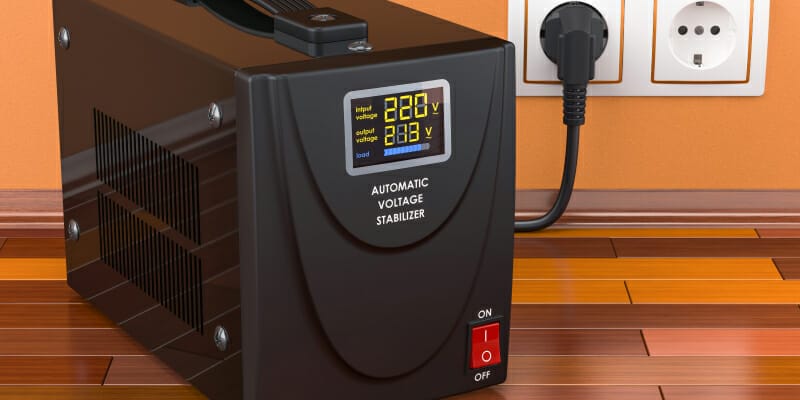
Sensitive electronic equipment may break down with an unstable power supply. This will affect the business continuity and the equipment. 230 and 415 volts are the low-voltage electric power distribution standards for single-phase and three-phase. Most of the electrical equipment, especially single-phase ones, are made to work with voltages between 220 and 240V. Voltage variations usually range from 170 to 270 V. When there is a voltage swing; appliances may experience substantial negative impacts.
By regulating voltage fluctuations, servo voltage stabilizers are crucial to any electrical supply equipment. If you own sensitive electrical equipment at home, contact any renowned servo stabilizer manufacturer in Chennai for assistance. Servo stabilizers guard against damage and electrical risks. In this blog, learn more about servo voltage stabilizers' uses, applications, and how they may safeguard your appliances.
High voltage
When the voltage is high, electrical and electronic equipment's no-load current rapidly rises. High current damages electrical and electronic equipment's insulation, accelerates equipment failure, and increases equipment losses due to overheating.
Low voltage
Electric equipment's no-load current does not rise at low voltage, which does not impact the equipment's lifespan. However, if the voltage is too low (370V), the consumer must use a DG set, which is quite expensive.
Let us discuss how the failure of various electronic equipment happens with voltage fluctuation here.
A servo stabilizer is necessary to maintain consistent voltage and protect priceless gadgets to gain the desired performance. A voltage regulator employs a feedback control method to maintain a constant output voltage. It is employed in circumstances where the input voltage is unpredictable or vulnerable to fluctuations. Servo stabilizers are recommended in regions with a poorly controlled power grid or where frequent blackouts or brownouts affect the electrical supply.
Compared to traditional voltage regulators like transformers, servo voltage stabilizers are accurate. They respond to changes in input voltage more quickly and efficiently. These features make servo voltage stabilizers suitable for various applications to safeguard expensive and fragile electronic machinery.
Characteristics
Although servo stabilizers primarily regulate voltage, they also include a few additional characteristics to make them more user-friendly. Depending on the mounting method, servo stabilizers are often designed in various versions.
There are ones that are pole-mounted and wall-mounted, so they may be installed at positions that are high from the ground level. This is to prevent any power-related mishaps. As a result, they guarantee a safer environment in different areas.
To maintain security, they also include a time delay system. They may have more time to deal with the uneven voltage situations. They have a metre to view the voltage and other crucial power parameters. LED indicators are utilised for displaying a variety of things.
They enable overload prevention by quickly responding to an unexpected short-circuit, power outage, or integrated circuit burn. Therefore, servo stabilizers are user-friendly, environmentally friendly, trustworthy, and efficient.
Benefits
Applications & usage
To safeguard delicate electronic equipment, servo voltage stabilizers can be applied in a variety of contexts, including industrial, commercial, and residential ones.
Printing equipment
Even a slight voltage difference can ruin printed material. Therefore, servo stabilizers and equipment like flexographic machines, offset lithography, digital printing inkjet, and xerography are necessary for the printing sector.
CNC machines
CNC machines and other imported machinery require protection against voltage and power-related problems. This is because they possess intricate circuits that are precisely calibrated to specific output voltages, a guarantee that can only be achieved by utilising a high-quality servo stabilizer.
Medical equipment
Medical equipment is expensive. For these reasons, protecting the equipment from voltage issues such as spikes and fluctuation is essential. By limiting the incoming voltage, servo stabilizers are crucial equipment that prevents overloading. Servo stabilizers are of great use to medical equipment like CT scanners and MRI machines and prove to be a wise investment.
Textiles
Machines in the textile industry frequently use three-phase supply lines, and these connections often experience voltage swings. A servo stabilizer is used to stop such voltage fluctuations so that the machines run without technical problems like overloading. Eventually, it helps in preventing any harm to the electrical equipment.
Plants/factories
Modern industrialists managing factories understand the value of servo voltage stabilizers and voltage controllers. They never think twice and invest in servo voltage stabilizers during the early stages while planning the factory.
Servo voltage stabilizers are widely used in various industries, including engineering, cold storage, air conditioning, cement, flour, oil, paper, rubber, tea estates, food processing, footwear and leather, distilleries and beverages. They are also used in clubs, multi-storey buildings, call centres and export houses.
Final words
When voltage stabilizers are implemented, you won't need to make any expensive replacements or repairs. Servo stabilizer suppliers will ensure that voltage fluctuations are taken care of in any circumstance. Contact Nantech Power Systems, one of the best UPS manufacturers in Chennai, and we'll help you determine the best course of action for your company's requirements.

In recent times, there has been a growing fascination with transitioning to solar energy, whether you are a homeowner or a business proprietor. Considering the increase in demand, it is essential to understand that not every solar panel is the same. You must analyse the variations between commercial and residential solar systems to know better about solar panels and their functioning. Whether searching for solar panel suppliers & dealers in Chennai or elsewhere, these distinctions will help you make an informed choice.
Solar systems comprise multiple photovoltaic panels that convert sunlight into electricity efficiently. They provide a pure, renewable energy source that needs minimal maintenance and emits no carbon dioxide. Keep reading as we unravel the fascinating world of solar power and shed light on its unique paths in homes and businesses.
To make an informed decision about renewable energy for your home or business, it is essential to understand several key distinctions. This will help you fully comprehend the differences between commercial and residential solar panels. These distinctions include efficiency, installation, size, and colour. If you are considering installing solar panels on the roof of your commercial structure, consider the following differences:
Power
Commercial solar panels are intended to generate more electricity than residential solar panels. This is accomplished by incorporating a greater number of PV cells in commercial panels. This can be approximately 70 cells or more, whereas only 60-65 cells are found in residential panels. Due to the greater number of cells, the physical dimensions of commercial panels are also greater. This makes it unsuitable for residential use but optimal for commercial applications owing to the ample roof space.
Colour
Residential solar panel systems are available in both black and white hues, while commercial systems are predominantly white. Although white solar panels are employed in residential and commercial settings, people installing them for their homes prefer black panels with black backing. In contrast, commercial clients prefer black panels with a white backdrop.
Installation duration
The installation procedure for commercial and residential solar panel systems involves a roof-mounted racking system secured with bolts. Flat and readily accessible roofs are easy to install. However, a number of factors drag down the procedure while installing commercial systems. These factors include the scale and technical complexities of commercial projects and, most importantly, the need to comply with specific regulations and acquire required approvals. Commercial initiatives have more stringent compliance requirements, causing the approval process to be more time-consuming. After the design has been finalised and the system has been authorised, panel installation becomes simple.
Complexity
Design considerations for commercial solar energy systems are more complex than those for residential systems. This is because commercial systems are larger in space and have a lot of equipment that operates with higher electrical ratings. These contribute to the technical complexities. In addition, local electrical lines must be evaluated carefully to ensure they can manage the solar input from the commercial solar panel system.
Price
Cost represents a significant distinction between residential and commercial solar systems. The cost of solar panels is determined by the power output rather than the system type. Generally, commercial solar systems have higher initial costs but less expense per watt. Commercial systems are likely more costly per panel than residential systems because of their larger dimensions and greater storage capacity. However, the energy production cost per watt is identical for residential and commercial panels.
Efficiency
Powered by a greater number of cells and larger dimensions, commercial solar panels outperform their residential counterparts in terms of energy output. In addition, commercial solar panels are typically more efficient than residential panels, with approximately 18.6% efficiency.
Businesses investigating solar panel systems possess more options when attempting to go off the grid. Commercial properties may mount solar panel systems on their roof, but they also have the option to explore more innovative solutions, such as solar-panelled parking lots and ground installations. In contrast, residential solar systems frequently have fewer installation options due to limitations caused by home size and neighbourhood restrictions. This restricts their installation only to the roof.
The Takeaway
There are significant differences between commercial and residential applications regarding solar panel installation. It is crucial to comprehend these distinctions to arrive at an informed choice when contacting professional solar panels and UPS manufacturers in Chennai like Nantech Power Systems. While both systems have a lot of differences, they operate with the sun's abundant energy, thereby saving pockets and contributing to the environment by reducing global warming. Get in touch with Nantech Power Systems right away!
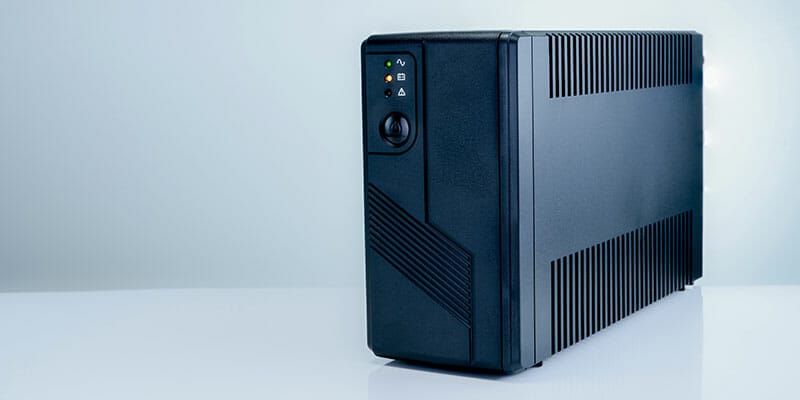
Many of us depend on computers to perform our jobs, education, businesses, and finances. So, power outages can have serious consequences. We risk losing information, failing to complete necessary transactions, and being accidentally removed from critical meetings if power outages happen unexpectedly. Uninterruptible power supplies, or UPSs, have become increasingly popular as it helps us overcome all the difficulties mentioned above. Recognising the importance of dependable power backup solutions, businesses and individuals are reaching out to companies such as Nantech Power Systems for our expertise in delivering high-quality delta UPS systems.
Power fluctuations can pose significant dangers to your electronic devices and computer in the modern world. To protect against these fluctuations and avoid potential damage, backup power supplies, also known as UPSs, are constructed to stabilise the power supply. Different UPS designs offer varying degrees of protection against disturbances such as power surges, noise interference, overvoltage, undervoltage, power decline, and power outages.
Manufacturers have devised a variety of UPS systems, including line-interactive, double/online conversion, and offline/standby configurations, to address these issues. This discussion will concentrate on online and line-interactive UPS layouts, comparing and contrasting them to assist you in selecting the optimal solution for your specific requirements. First, we'll discuss online and line-interactive UPS here.
Line-interactive UPS
A line-interactive UPS maintains the inverter's connection to the electrical grid. In the event of a power disruption, it switches the DC route from the battery through its normal charging mode to its emergency power supply mode. This ingenious setup permanently links the UPS's output to the battery-powered AC inverter. The UPS inverter goes into battery charging mode when the source of input for AC power is stable. When the mains supply goes out, the UPS's transfer switch opens, allowing the battery to provide the device's output. Since an inverter is always wired to the output, it provides additional filtering and results in fewer switching transients.
Pros of a line-interactive UPS include:
Negative features are:
Double/online conversion UPS
A double-conversion UPS, as the name suggests, does two power conversions: The primary source's Alternating Current (AC) is converted into Direct Current (DC) and stabilized before being supplied into an inverter, which turns the DC back into Alternating Current (AC). In the event of a mains power failure, the UPS will switch to battery power without human intervention. Since the inverter has already been activated, power is transferred to the battery instantly. The double-conversion process reduces power disturbances from the mains, such as harmonics and waveform distortions. Thus, online UPSs offer the highest level of safety for IT hardware.
The advantages of a double/online UPS are:
The cons include:
All varieties of UPS systems were created to safeguard hardware and electronic devices in the event of an unanticipated power outage. However, their true potential varies because of differences in their underlying operating principles. Online and line-interactive UPS, provide the same level of protection but in different ways:
Noise/surge filtering
To protect electronics from being harmed by lightning, electromagnetic (EMI/RFI) line noise, and power surges, all UPS systems have surge suppression and line noise filtering features. In particular, the double-conversion functioning of the online UPS unit provides enhanced protection by isolating equipment from facing issues with the alternating current.
Voltage regulation
Line-interactive UPS can automatically regulate voltage if it falls outside of predetermined ranges. An online UPS achieves greater precision in voltage regulation due to its double-conversion process.
Time required for battery transfer
To ensure the uninterrupted operation of even the most power-sensitive devices, line-interactive UPS systems make the transition to battery power in 2 to 4 milliseconds. Since the inverter will already be powering the linked equipment load in the event of a power failure, there is no transfer time with an online UPS system.
Departmental servers, households, SMBs, and MSMEs can all benefit from a line-interactive UPS that provides the high-power reliability they require. These devices use a unique set of operating principles and can be widely used in set-ups ranging from private residences to massive data centers. They require charging the battery either once or twice a day. But, they may require frequent charging in places with poor infrastructure where the alternating current line is unstable, varies dramatically, or is greatly distorted.
The best online UPS system isn't just useful in industries like computing, transportation, securities, banking, medicine, and communications where continuous power is required; it's also the go-to option for providing backup power to essential equipment and servers in data centers. They are particularly used in intensive care units that have very important life-saving medical equipment.
The bottomline
Different types of UPS solutions offer varying degrees of security, so knowing which one you're using is crucial. Because of their fundamentally different designs, online and line-interactive UPS offer different features, functions, benefits, and limits. Furthermore, a UPS's internal architecture affects its performance in a variety of contexts. If you want to get the best UPS, reach out to Nantech Power Systems, one of the leading delta UPS dealers in Chennai. Get in touch with us to know more!
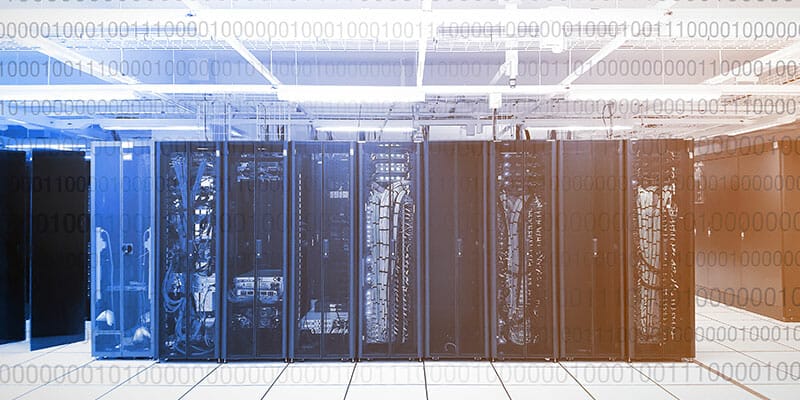
The rising temperature in the peak of an Indian summer sets the perfect tone for our blog topic- Precision Air Conditioning for IT applications.
Until recently, data centre managers purchased precision air conditioning systems primarily driven by the need to maintain precise temperature and humidity control in IT spaces. However, ASHRAE (the American Society of Heating, Refrigerating, and Air-Conditioning Engineers) revised and expanded the acceptable temperature and humidity range for sensitive IT environments.
With thermal management for IT systems remaining a critical priority, the requirement for precision air conditioning is a must. What is precision air conditioning all about?Also known as data centre-grade cooling systems, Precision ACs (PAC) like Emerson precision air cooling systems are a special kind of air conditioning equipment that maintain precise temperature and humidity conditions for critical applications such as:
These exclusive air conditioners are built to maintain temperature and RH in sensitive environments like data centres and IT spaces. Even if precise temperatures and humidity set points are no longer mandatory, the PAC plays a vital role in ensuring data-sensitive devices remain operable even with sophisticated servers' high heat.
IT is an ever-evolving industry. With automation and digitalisation becoming the norm of the day, enterprises and organisations are making more room to house bigger and more powerful equipment to run their IT network environments. The more powerful the equipment, the more work efficiency it creates. But, this high-end equipment has a big risk: They generate a lot of heat.
Now, imagine an IT network room with these powerful servers connected to more than a dozen computer systems. The equipment-generated heat gets trapped in the space, and without adequate ventilation, the temperature can escalate to dangerous levels that shorten the lifespan of other devices.
Here’s where PACs come into play. These devices allow sensitive IT equipment to remain running and operable and prevent any downtime. Now, you may wonder if commercial air conditioners aren’t good enough to serve the same purpose. Of course, many buildings and industrial facilities rely on conventional AC systems. They are, without a doubt, very effective in controlling room temperature and humidity. Commercial air conditioners and Precision air conditioners serve different purposes. They are also designed differently.
Let’s break down the functional specifications of a precision AC.
1. Manage IT equipment's concentrated heat load
Most IT office spaces are not originally designed to house high heat-generating equipment but have no other option but to do so. High-performance equipment makes conventional cooling solutions ineffective and creates an unsuitable working environment.
Precision air conditioners, however, are specifically designed to handle high heat trapped in small, congested areas and expel it in whatever method the system uses.
2. Operate non-stop, round-the-clock.
Even if the outside temperature is cool and comfortable, IT spaces require air conditioning to remove the trapped heat. Even in such scenarios, you cannot use commercial air conditioning for IT applications because they are designed to operate when the outside temperature is roughly 55 degrees Fahrenheit.
The additional challenge with data grade centre cooling systems is that they will automatically shut down after hours. In such cases, the computer equipment will remain vulnerable to electrical or other issues.
Such problems are uncommon with precision air conditioners, mainly because they are designed to work non-stop, irrespective of the outside temperature. With this feature, you won't have to worry about your computer networks overheating.
3. Air filtration and volume
Compared to a less dense "comfort" application, a high-density heat load in a small space requires more air exchanges. Ordinary air conditioning cannot provide the volume of air needed by IT equipment. Normal office spaces require only two air changes per hour, but an IT room requires multiple changes per hour. This air volume is compulsory to handle temperature fluctuations, hot spots, and ideal heat ratios within the IT environment.
4. Control room temperature to the best of their ability
A conventional AC system’s capacity is split between cooling the space and eliminating moisture from the air. This combination creates a comfortable, optimal temperature when the temperature rises. About 40% of the system’s capacity regulates the humidity in this case. The rest of the capacity, which is 60%, is dedicated to regulating the air temperature and keeping the place cool.
This problem can result in a great deal of waste in IT spaces because IT equipment generates dry, intense heat. This means it doesn't require nearly as much capacity for humidification.
Think about it: What’s the point in buying a 100kW commercial air conditioner to cool an IT load of the same capacity? The system will most definitely fail because system can generate only about 60% of the cooling capacity.
Here’s where PCAs make a difference because they are designed with a heat ratio of 0.90%, which is the optimal cooling capacity required to cool IT devices. The remaining 10% capacity removes humidity entering the room whenever the doors open and close. Nowadays, thermal management systems offer a better heat ratio of 0.95%.
Cooling equipment works best only when they align with the purpose, equipment type and room size. A simple ceiling fan will suffice if you use a single PC or laptop. However, to run an industrial or business server network, you need higher-density equipment requiring a dedicated cooling system like precision ACs.
If you are interested in investing in emerson precision air cooling systems for your IT environment, contact our Nantech professionals in Chennai for expert guidance.
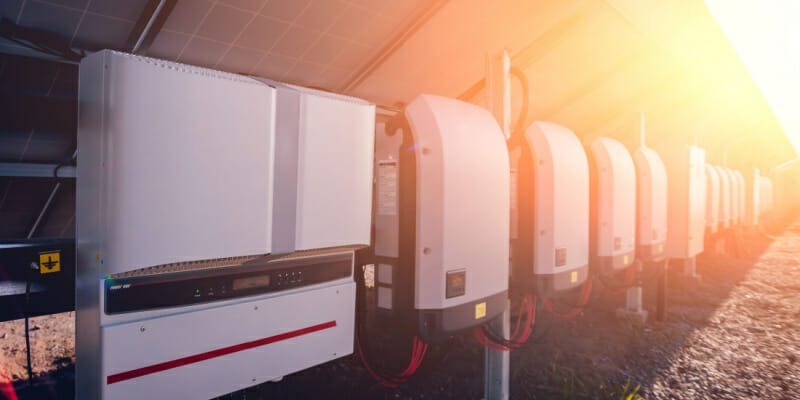
The steady transition to renewable energy sources has been one of the most noticeable environmental shifts of the last several decades. High pricing and limited supplies have led to a surge in demand for renewable energy sources like solar power. As a result, more and more homeowners are going solar in recent years, and many have taken to searching for reliable inverter battery dealers in Chennai to ensure their solar power system is properly installed and functioning. Industries and corporations have also invested in renewable technologies including wind, biomass, solar, and more out of a need for alternate energy options.
Direct Current power is produced by solar panels by absorbing solar radiation. Direct Current (DC) produced by the solar panels must be changed to Alternating Current (AC) before being utilized by conventional household appliances. That's why there are devices like solar inverters.
Solar Inverters: What is It?
The electricity supplied by solar panels is in the form of direct current (DC), and solar inverters convert this into alternating current (AC) at the proper voltage and frequency. The energy produced by solar inverters may be used either locally in residential infrastructures or sent straight into the commercial power grid for distribution. Selecting the right type of solar inverter is important for optimizing the utility of the produced solar energy.
With the rise in popularity of solar systems over the years, it's crucial to understand how they operate and what characteristics set them apart from one another.
The following are the varieties of solar inverters that are most often seen on the market today:
It is essential to have a knowledge of the function of an inverter in order to fully understand the distinctions between the four. The primary purpose of an inverter is to convert Direct Current (DC) into Alternating Current (AC). With regards to solar power systems, an inverter is crucial because it controls the flow of electricity to the household appliances. Now that we understand what an inverter does, we can dive into the specifics of the various solar inverter options available.
On-grid or Grid-tied Inverter
In solar power systems, on-grid or grid-tied inverters allow for the extra energy to be sent back into the mains power supply. These arrangements are by far the most common in both households and workplaces. When the electricity goes out, they are expected in a way to immediately switch over to the power backup system and disconnect themselves from the grid. With a maximum conversion efficiency of 98% and low minimum starter voltage, they are ideal for use in a wide variety of applications.
One of the most significant benefits of using an inverter that is connected to the grid is the avoidance of the need for batteries. As an alternative, these setups rely on micro or solar inverters to transform the DC power generated by the panels into AC power. The utility grid is used to store any extra power that is created throughout the process, and the customers are given a credit equal to the quantity of energy that is exported. This method is also called "net metering." Having an on-grid connection has several financial benefits, including net metering, higher efficiency rates, and reduced installation equipment expenses.
On-grid solar inverters also have the benefit of being upgradable. You can simply choose the ideal solar inverter for your requirements from the wide variety of options available. However, if the power goes down, a grid-tied system won't work without a battery backup.
Off-grid Inverter
An off-grid system, although being linked to the utility grid, uses solar power to recharge the battery and power the load. It only draws electricity from the grid when the power generated by the solar panels is insufficient to meet the demands of the load or to charge the battery. An off-grid system relies on two things to function properly: a well-thought-out design and an excellent battery system which can supply energy needs even when there's comparatively less sunlight.
There would be no power on dark or cloudy days if there were no battery or other way to store solar energy. The majority of solar energy storage systems for homes not connected to the power grid are designed to charge during the day and discharge at night. These systems may be customized to generate enough electricity throughout the day to meet the demands of a household.
One major drawback of using an off-grid solar inverter is that, if there's gloomy weather for many days, solar power alone may not be enough to meet electrical needs. They are adaptable and may be utilized in any situation. Nevertheless, a battery is required for an off-grid solar inverter to operate.
When it comes to solar inverters, micro inverters are among the most well-liked. This Solar Power System's solar inverters are hardwired to each individual solar panel. They provide a simple plug and play setup and eliminate the need for complicated wiring, making installation a breeze.
Installing solar panels requires a connection to your home's electrical grid, just like any other source of electricity. The drawback of a typical string inverter is that it limits the amount of power that the solar system may generate to that of the least efficient panel. As one panel fails, the others follow suit. Nevertheless, a tiny inverter is set up between each solar panel and the roof. Each solar panel may generate up to its maximum output since each panel comes with its own micro inverter. This means that a micro inverter is more efficient and effective than the traditional string inverters.
Every panel gets the most power possible since there is no weak link in the microinverter system. Also, it makes you safer. As they prevent high-voltage DC from being sent onto the roof, solar panel micro inverters are a more secure option.
Hybrid solar systems
Hybrid solar systems are grid-connected setups that use battery backup. These solar systems may be put together in a variety of different combinations. This solar system collects sunlight throughout the day to use power after the sun goes down. The solar system draws power from the grid and has the capacity to store surplus energy. Batteries may be charged in hybrid systems utilizing less expensive off-peak power. The cost of hybrid systems is much higher than that of standalone or off-grid systems.
Despite their high initial cost, hybrid systems provide users the benefits of both net metering and energy storage in the event of a grid outage. Customers benefit greatly from a constant flow of electricity from a hybrid solar system. Moreover, hybrid systems need significantly less upkeep than traditional diesel-fueled generators.
You can always find a good fit for your needs and budgets among the aforementioned inverters. Prior to purchasing a solar inverter, it is crucial to evaluate and understand your specific energy requirements.
If you're looking for the best solar inverters for your home or business, you can get in touch with Nantech Power System. Our team of experienced professionals will help you identify the best types of solar inverter that fits your needs. Contact us today and let us help you find the perfect solar inverter for you!
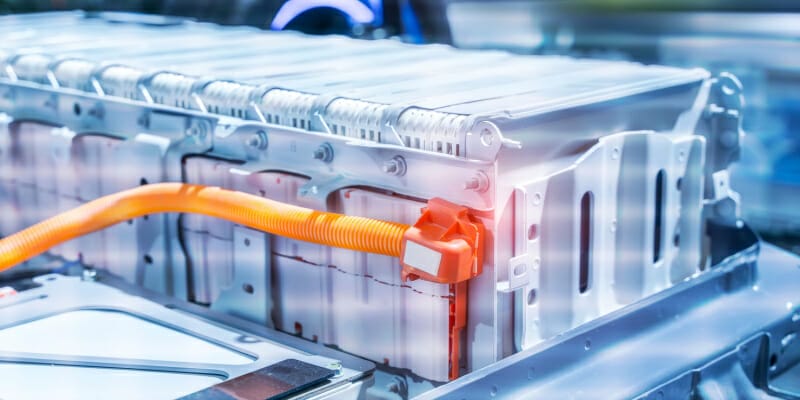
The battery is an essential component of an inverter system, and choosing the right battery for your inverter is crucial. Flat plate and tubular batteries are the two most common types of batteries used in inverters. Several factors, including the frequency of power failures, the budget, and the requirement of heavy-duty applications, can determine the difference between these two types of batteries.
If you are on the search for the best inverter battery dealers in Chennai, get in touch with Nantech Power Systems. We have all kinds of inverter batteries from A to Z. In this blog, we will discuss the key differences between flat plate batteries and tubular batteries to help you determine the best battery you need to choose to meet your requirements.
Flat plate batteries are lead-acid batteries recommended for places with frequent power shortages. They are cheap but have a lower lifespan (1-3 Years) compared to tubular batteries. They are best for places that require fast charging within low time. These batteries are unsuitable for heavy-duty equipment and are suggested for budget-conscious individuals with small homes. A flat plate battery has the following:
A tubular battery is an inverter battery that is ideal for areas that experience long and fewer power cuts. It is recommended for individuals who have big homes and do not have a budget restriction. This type of battery comes with a complex design and long lifespan (4-6 Years). It is best for long backup and heavy application usage. A tubular battery has the following:
Charge Cycles
At 80% depth of discharge (DOD), a flat battery typically has 50-1000 cycles, while a tubular battery has 800-1400 cycles. However, the number of charge cycles may vary depending on the manufacturer.
Float Current
In terms of maintenance, tubular batteries are favoured due to their low self-discharge rate and the high number of charge cycles, reducing the need for maintenance. Some batteries, such as gel tubular batteries, do not require maintenance.
Thermal Management
The design of tubular batteries allows for easier heat convection, making them more thermally efficient compared to flat plate batteries. This is also influenced by the amount of electrolyte in the battery, with taller tubular batteries having higher electrolyte volume and better thermal management properties.
Let us explore the pros and cons of both flat plate and tubular batteries.
Flat Plate Batteries
Pros
Cons
Tubular Batteries
Pros
Cons
Higher Cost: The biggest disadvantage of tubular batteries is their cost. They are more expensive than flat plate batteries, which may make them an unattractive option for some people.
In terms of performance, tubular batteries offer better performance compared to flat plate batteries, as they have a larger surface area and can deliver more power. Tubular batteries also have a better discharge rate, making them ideal for high-power applications. On the other hand, flat plate batteries are limited in their performance, and their output power decreases as the battery ages. Although they are budget-friendly, they offer limited performance and a short lifespan. But tubular batteries are a high-performance option, known for their long life, reliability, and ability to perform well in extreme conditions. If you require a continuous power supply and are willing to invest in a high-performance battery, then a tubular battery is the right choice. However, if you're budget conscious and need a power backup for a short duration, then a flat plate battery may be a good choice. Contact Nantech Power Systems, one of Chennai's best inverter battery dealers, if you are looking for high-quality tubular or flat-plate batteries.
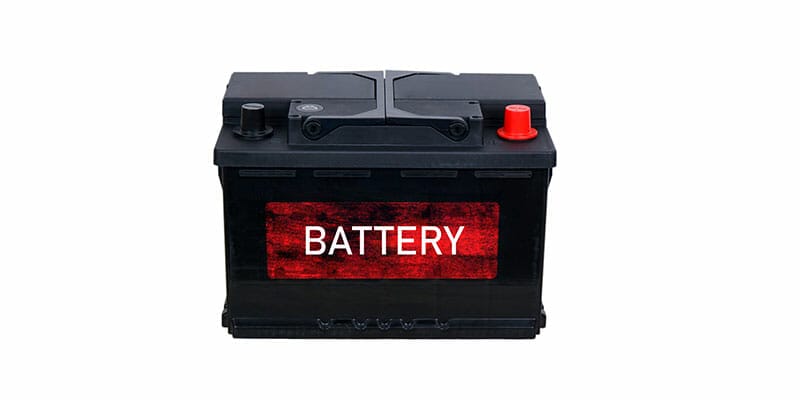
Sealed Maintenance Batteries (SMF) are a type of Valve Regulated Lead Acid (VRLA) batteries. These are flat-plate inverter batteries. SMF batteries are enclosed and sealed and hence require no maintenance. They are environmentally safe and do not require adding or changing water procedures. Batteries with zero maintenance are commonly employed in applications where little maintenance and limited space are important concerns. Nantech is one of the premium inverter battery dealers in Chennai, and we offer all the latest varieties of SMF batteries you might need.
SMF batteries are designed with leak-proof technology to prevent water or acid leakage, safeguarding your flooring space from damage. SMF batteries are entirely maintenance-free and don't need to be topped up with water or acid. The battery operates on the principle of oxygen recombination; therefore, it has no loss of water throughout the charge-discharge cycle. Most people like these batteries since they are simple to maintain. The following are the key characteristics of the SMF battery:
SMF Battery Varieties
The SMF is split into three categories based on its purpose.
New SMF batteries are also being developed to improve performance. Deep discharge batteries are created for: longer cyclic life, high discharge, front access to monitor terminal voltage, and temperature tolerance.
SMF Battery Applications
A sealed battery has many applications, and the SMF's various sizes and powers make it an excellent choice for many. Some of the most popular applications of SMF batteries are:
Automobiles and backup systems account for the majority of SMF battery applications. They are suitable for cars as well as other modes of transportation because they do not emit gas or get overheated. They always remain sealed.
SMF is a popular alternative for powering an uninterruptible power supply system, which supplies backup power when the main power goes out. Frequent power outages drive UPS applications for SMF batteries.
Furthermore, an SMF battery for backup systems like UPS has to operate for a few minutes to provide standby power so that the protected equipment can be turned off. As a result, you can find them securing gear for PCs, telecom equipment and data centers.
Today’s businesses cannot function without computers and phones, and rising incomes have boosted the quantity of electric gadgets in use. It is best to install the UPS in the same area, saving money on wiring.
SMF batteries have numerous major advantages aside from the fact that they are maintenance-free. Among the most significant are:
SMF batteries are indeed the best solution for your needs. Its battery plate is made of lead-calcium alloy that has a high discharge rate, great performance and reduced internal resistance. As a result of the zero delays in receiving and usage, these batteries serve as effective backup power.
To extend battery life, it is vital to regularly monitor battery performance. Here are some suggestions for improving battery performance.
The Takeaway
The SMF battery is an excellent choice for users because of its high discharge rate, extended life, and lightweight design. It makes it suitable for any application. Aside from that, it requires no maintenance and has an exceptionally low self-discharge rate. Furthermore, their adaptability has resulted in more application-specific solutions for powering tiny devices, protecting power grids, and supplying power to transportation. These properties make SMF batteries ideal for consumers owning diverse equipment.
Thinking of getting a SMF battery? Get in touch with Nantech if you are looking for the best inverter battery dealers in Chennai.
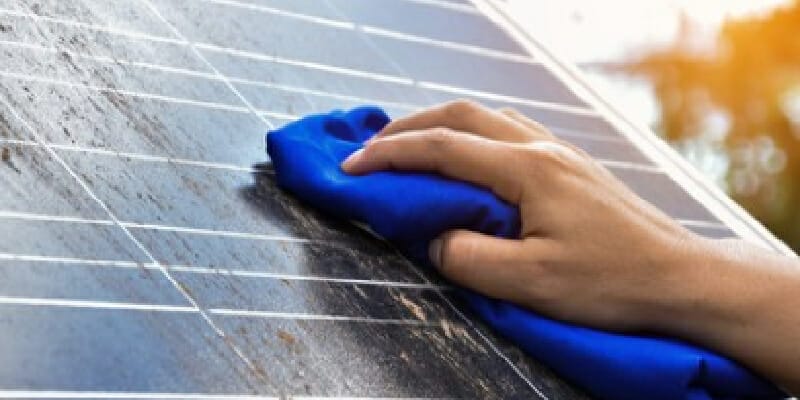
Introduction
Solar panels are typically exposed to everything because they are mounted on roofs. So, It is common to find leaves, bird droppings, dust, pollen, and even filth on the solar panels based on the factors like climate, location, or installation.
And as you've already guessed, anything that prevents light from going through is bad for the performance of your panel. This is why experts recommend cleaning solar panels twice a year.
Cleaning or maintaining solar panels is as vital as installing them. Solar panels are made up of different delicate materials. These substances have the potential to corrode or even start to degrade the panels if improperly cleaned or ignored. As a result, there may be a risk to public safety in addition to the reduction in solar production.
Continue reading this article to learn how to clean solar panels properly and what should be kept in mind. You'll also learn why it's important to clean solar panels regularly.
The one common issue that solar panel users deal with is dirty panels. An unclean solar panel poses a safety risk in addition to being an annoyance. They may reduce your system's productivity, which would increase your electricity costs. Your solar panels may be dusty for a number of reasons.
The following are a few common causes:
Water: If water enters the panel, it may lead to corrosion and lower output. Additionally, rainwater can seep inside your panel, resulting in damage and corrosion-related rusting all-around metal connectors.
Debris: Particles may get stuck and obstruct the free flow of electricity through the panels.
Dust: If you don't clean your solar panels frequently enough, dust might accumulate on them over time.
Manufacturers of solar panels claim that rainfall is sufficient to keep their panels clean. Even though rain would truly clean the solar panels, they are frequently not being rained on because they are positioned in the dry area.
Several solar panel users overlook the significance of regularly cleaning their panels. Your system's performance will suffer if you don't do this frequently enough because of the repellent layer of filth on them. The primary advantage of cleaning the solar panels is to maintain their functionality over time and prevent system degradation, which can lower energy output and raise maintenance costs.
Here are some advantages of cleaning solar panels:
You'll eventually make the decision to cleanse your solar panels. Perhaps there is too much dirt accumulation, or you simply wish to adhere to the advice. Solar panels can be difficult to clean with water. It can be messy, takes too much time, and could harm the panels. Fortunately, a few easy tips can ensure that your solar panels look fantastic for years.
Here are some techniques for cleaning solar panels.
Wrapping Up
Solar panel maintenance is a crucial component of your domestic power system. Your solar panels may need regular cleaning to get back to optimal performance if you detect a decline in power output or a peak power variance. Cleaning solar panels may increase their life and enhance the quantity of electricity they produce.
In conclusion, cleansing your solar panels on a monthly basis is quite affordable and doesn't take much time, so be sure not to neglect this significant investment in your home.
Looking for solar panel suppliers in Chennai? Wait no more! Nantech is your best option. Let us know your requirements. Call us right away, and the rest will be handled by us.

When it comes to electricity distribution & supply, the role of transformers is essentially crucial. Before electricity reaches our homes from power stations, its overall voltage needs to be reduced in such a way that our electric wires and equipment are able to operate without getting damaged. Electrical gadgets of even the highest quality such as UPS systems from Nantech - one of the leading UPS manufacturers in Chennai can operate smoothly because transformers do their job.
So, high voltage transformers come into the picture to ensure the optimum performance of electricity supply systems and the safety of users. Needless to say, the role of transformers is quite vital. Let us learn more about the overall scheme of things.
Essentially, high-voltage transformers are electrical equipment with the ability to decrease the voltage phases of electricity. These transformers need to have the highest standards of insulation installed in them to meet the usage requirements of people living in a particular locality. However, even the best high-voltage transformers experience breakdowns when the voltage levels surge too much in a limited time. Technically, all high-voltage transformers operate in a single phase of voltage having core-type functionality.
Varieties of High Voltage Transformers
Electromagnetic induction is the general principle based on which all high-voltage transformers operate. However, there are three important varieties of transformers, namely:
Various Designs of High Voltage Transformers
To transform voltage as well as current electric levels, transformers use the concept of electromagnetic induction in both coils. They could be set up in either a single phase or 3 phase. When you start moving towards the bottom of the list of the high current voltage coils, the size as well as costs of a transformer tend to increase. The single-phase configurations can be set up for single-phase, dual-phase, quad phases as well as ladders or even 5-lead. Three-phase configurations, on the other hand, are set up for Wye and Delta configurations.
If the high voltage transformers are to be utilized for multiple low voltages and also to avoid short circuits, then they must have multiple primary. When you are looking to buy or design High-voltage transformers, there are some crucial factors to consider. These factors include the highest ratings for secondary voltage & current, greater output as well and power ratings. These devices can also be built in the form of toroidal transformers. Laminated transformers may also be considered. Toroidal pulse transformers generally have copper wire surrounded around with a cylindrical core to allow the magnetic flux to flow. On the other hand, the laminated transformers have layered cores. They are also referred to as E-I transformers which have been insulated using an insulating dielectric material.
The method of operation of high voltage transformers must be pretty clear from reading the above sections. Various means and methods are used to decrease the voltage of electric currents in the transformers so the electricity becomes safe for use by the components to which it shall go.
The fundamental principle in transformer operation is this– an electrical charge generates a magnetic field and the magnetic force inside the winding can start producing voltages across the coil. As a result of their close vicinity, the electricity in the primary coil generates a magnetic field causing power output throughout the secondary coil to be much lower in terms of voltage. If the secondary coil has more turns, it generates more voltage, and the transformer is referred to as “set-up”. On the other hand, a lower number of turns produces lesser voltage and is termed a “step down”.
At its core, high-voltage transformers are converters that receive electricity at high voltages. Thereafter, voltages are converted from one level configuration to the other, typically from greater to lesser. The insulating abilities of these power transformers should always be cautiously created to endure these high voltages
Also Read: The Complete Buying Guide For Voltage Stabilisers
High-voltage transformers are also utilized to power plasma generators. Specially designed coils are employed to increase voltages to levels that are sufficient to generate plasma. Wind turbines and other crucial sources of renewable energy make use of these devices to transfer energy to where it is needed. Other application areas for these devices encompass:
Staying Safe When Working With High-Voltage Transformers
Since current transformers have the ability to handle high voltages, it is critical that precautionary measures are taken wherever it has to be handled directly, with the goal of preventing accidents.
Takeaway
The significance of using top-notch transformers in a distribution system for electricity cannot be overstated. Transformers are an essential component for ensuring good electrical service and network security. High-voltage transformers are used in a wide range of industrial sectors and systems. They seem to be especially helpful for securely managing voltages lesser than or equal to 15,000 volts.

How often have you brought a brand-new home appliance without buying a voltage stabiliser? Probably never. If you live in a country where your electricity supply is plagued with voltage fluctuations, you will need stabilisers to safeguard your appliances. Stabilisers are essential to prevent expensive appliances from permanently damaging by power fluctuations.
A voltage stabiliser will give your appliances a long life and is a long-term investment. Our blog discusses everything you need to know about voltage stabilisers and what to consider when investing in one.
As small and compact as they seem, voltage stabilisers are powerful electrical devices designed to recognise and regulate voltage fluctuations and deliver a consistent voltage output range.
Let’s explain how a stabiliser works without sounding complicated and technical. When your utility voltage is too low, the in-built electronic circuit in your stabiliser senses it, enabling an electromagnetic relay to compensate for the voltage loss and feed the regulated power to the connected equipment. When the incoming voltage is too high, the stabiliser activates another electromagnetic relay to deduct the excess voltage.
What Powers Your Voltage Stabiliser?
Your voltage stabiliser is no less of an engineering marvel. They are built with electronic circuitry that uses electromagnetic relays to change the taps of the in-built autotransformer to generate the desired voltage when the power fluctuates. When the voltage supply falls outside the range, a mechanism switches the transformer tap and brings the supply into the safe range.
There is no dearth of stabilisers in today’s market. Voltage stabilisers are in high demand due to the influx of innovative home appliances into the consumer market. Stabilisers designed with the latest technology can protect your expensive home appliances from voltage fluctuations for a long time. However, there is one contingency: You cannot use the same type of stabiliser for all your appliances. There is no “one-size-fits-all” because different stabilisers are needed for different appliances.
It is important to choose a voltage stabiliser, especially for the appliance to which it will be attached. Stabilisers are classified according to the following:
All appliances are designed to operate on a specific energy limit, and voltage stabilisers are manufactured with these specifications. Based on these criteria, there are different stabilisers available for:
It is not right to pick any stabilisers off the shelf. It is crucial to select the right one, and you need to consider aspects such as:
When you purchase a new refrigerator or air conditioner for your house, your salesman will recommend you to club your purchase with a stabiliser. Here are five technical factors to check when before paying for the voltage stabiliser:
1. Working range
The working range of a stabiliser is the voltage range in which the stabiliser regulates the input voltage and delivers the desired output.
2. Load connection
One of the most important aspects is the nature of the load connected to the stabiliser. Getting the VA (or Volt Ampere) from Watts (W) will require some measurements, but you can approximate the VA size by increasing Watts by 20%.
3. Surge current
You should also consider the surge current that flows through your device when you switch it on.
4. Voltage rating
Every stabiliser has a specification sticker with information about the following:
The standard service voltage for stabilisers manufactured in India is 230 VAC, 50 Hertz.
5. Stabiliser rating
You can calculate the stabiliser rating by multiplying 230 x maximum rated current for all the appliances you want to connect to the device and adding an extra 20-25%. If you intend to add more appliances to it, you need to keep a buffer accordingly.
Next, you should look for certain features to ensure you are buying an upgraded device. A good, modern stabiliser should have the following:
Are you still in a dilemma about investing in stabilisers? Do you think your TV or air conditioner does not require a stabiliser because it has upgraded technology? Well, think again, or you could end up with a severely damaged device.
A good stabiliser will not cost much, and even if it does, it is not an expense, but an investment, because it:
1. Prevents equipment malfunction
All electronic devices come with safe operating limitations, and any non-compliance can have disastrous consequences for your device, from simple malfunctioning to complete operational failure.
2. Enhances appliance longevity
Voltage stabilisers smooth out power from the electric grid by suppressing surges. In the absence of a stabiliser, your appliances are susceptible to sudden spikes and dips in the current supply. A voltage stabiliser will ensure your appliances work for years without any issues.
3. Ensures overall safety
When your expensive equipment is connected to stabilisers, there is a much lesser fire risk due to faulty wires and short circuits. In short, a stabiliser provides round-the-clock protection to electrical appliances, your home, and your family.
Some things are more a necessity than a luxury, and a voltage stabiliser is one of them. Now that you understand the importance of these devices, it is best to buy the appropriate stabilisers for the devices in your home. Nantech Power Systems, Chennai, provides a wide range of affordable voltage stabilisers for various appliances. Give us a call to find the right one for your requirements.